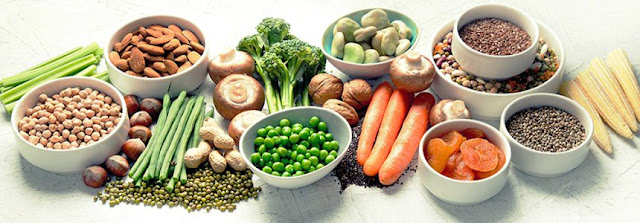By: Eric Etchikinto Agoyi, Konoutan Médard Kafoutchoni, Hospice Samson Sossou, Albérik Allagbé, Maurice Hounguèvou, Achille Ephrem Assogbadjo, Brice Sinsin
"" IJAAR welcome all of you to submit your research paper for publication in the field of Agriculture, Agronomy, Horticulture etc. Please submit your manuscripts via Online submission panel.""
Key Words: Leguminous vegetable, Edamame, Phaseolus, Beans
REFERENCE
Akomagni, LA, Guidibi E. 2006. Monographie De La Commune De Cotonou. Afrique Conseil. Cotonou, Benin.
Ali M, Abedullah D. 2002. Nutritional And Economic Benefits Of Enhanced Vegetable Production And Consumption. Journal Of Crop Production 6(1-2), Pp.145-176.
Bayani EM. 2000. Reducing Micronutrient Malnutrition: Policies, Programmes, Issues, And Prospects—Dietary Diversification Through Food Production And Nutrition Education. Food And Nutrition Bulletin 21(4), Pp.521-526.
Block SA. 2004. Maternal Nutrition Knowledge And The Demand For Micronutrient-Rich Foods: Evidence From Indonesia. Journal Of Development Studies 40(6), Pp.82-105.
Bouchenak M, Lamri-Senhadji M. 2013. Nutritional Quality Of Legumes, And Their Role In Cardiometabolic Risk Prevention: A Review. Journal Of Medicinal Food 16(3), Pp.185-198.
Burchi F, Fanzo J, Frison E. 2011. The Role Of Food And Nutrition System Approaches In Tackling Hidden Hunger. International Journal Of Environmental Research And Public Health 8(2), Pp.358-373.
Capo-Chichi YJ, Guidibi E. 2006. Monographie De La Commune De Ouidah. Afrique Conseil. Cotonou, Benin.
Darnton-Hill I, Webb P, Harvey PWJ, Hunt JM, Dalmiya N, Chopra M, Ball MJ, Bloem MW, De Benoist B. 2005. Micronutrient Deficiencies And Gender: Social And Economic Costs. The American Journal Of Clinical Nutrition 81(5), Pp.1198s-1205s.
Dytham C. 2011. Choosing And Using Statistics: A Biologist’s Guide. John Wiley & Sons.
Fao, Ifad And Wfp. 2015. The State Of Food Insecurity In The World 2015. Meeting The 2015 International Hunger Targets: Taking Stock Of Uneven Progress. Rome, Italy.: Fao.
Graham PH, Vance CP. 2003. Legumes: Importance And Constraints To Greater Use. Plant Physiology 131(3), Pp.872-877.
Haddad L, Hawkes C, Webb P, Thomas S, Beddington J, Waage J, Flynn D. 2016. A New Global Research Agenda For Food. Nature News 540(7631), P.30.
Hounsome N, Hounsome B, Tomos D, Edwards‐Jones G. 2008. Plant Metabolites And Nutritional Quality Of Vegetables. Journal Of Food Science 73(4), Pp.R48-R65.
Kader AA, Perkins-Veazie P, Lester GE. 2001. Nutritional Quality Of Fruits , Nuts , And Vegetables And Their Importance In Human Health. (January).
Keatinge JDH, Yang RY, Hughes J D’a, Easdown WJ, Holmer R. 2011. The Importance Of Vegetables In Ensuring Both Food And Nutritional Security In Attainment Of The Millennium Development Goals. Food Security 3(4), Pp.491-501.
Kessler A. 2002. Farming Systems In Urban Agriculture In Four West Africa Cities, With Special Focus On Its Profitability, Wastewater Use And Added Malaria Risk. Ghana.
Kora O, Guidib E. 2006. Mongraphie De Sèmè-Kpodji. Afrique Conseil. Cotonou, Benin.
Lê S, Josse J, Husson F. 2008. Factominer: An R Package For Multivariate Analysis. Journal Of Statistical Software 25(1), Pp.1-18.
Maep. 2011. Plan Stratégique De Relance Du Secteur Agricole (Psrsa). Maep Benin.
Nangbe F, Guidibi E. 2006. Monographie De La Commune De Tori-Bossito. Afrique Conseil. Cotonou, Benin.
Ng M, Fleming T, Robinson M, Thomson B, Graetz N, Margono C, Mullany EC, Biryukov S, Abbafati C, Abera SF. 2014. Global, Regional, And National Prevalence Of Overweight And Obesity In Children And Adults During 1980–2013: A Systematic Analysis For The Global Burden Of Disease Study 2013. The Lancet 384(9945), Pp.766-781.
Ntatsi G, Gutiérrez-Cortines ME, Karapanos I, Barros A, Weiss J, Balliu A, Dos Santos Rosa EA, Savvas D. 2018. The Quality Of Leguminous Vegetables As Influenced By Preharvest Factors. Scientia Horticulturae 232, Pp.191–205.
Obuobie E, Keraita B, Danso G, Amoah P, Cofie OO, Raschid-Sally L, Drechsel P. 2006. Irrigated Urban Vegetable Production In Ghana: Characteristics, Benefits And Risks.
Pag. 2016. Programme D’actions Du Gouvernement 2016-2021. Gouvernement Beninois.
Pingali P. 2015. Agricultural Policy And Nutrition Outcomes–Getting Beyond The Preoccupation With Staple Grains. Food Security 7(3), Pp.583-591.
Platts PJ, Omeny PA, Marchant R. 2015. Africlim: High‐Resolution Climate Projections For Ecological Applications In A Frica. African Journal Of Ecology 53(1), Pp.103-108.
Schreinemachers P, Simmons EB, Wopereis MCS. 2018. Tapping The Economic And Nutritional Power Of Vegetables. Global Food Security, 16(June), Pp.36-45.
Septembre-Malaterre A, Remize F, Poucheret P. 2018. Fruits And Vegetables, As A Source Of Nutritional Compounds And Phytochemicals: Changes In Bioactive Compounds During Lactic Fermentation. Food Research International 104, Pp.86-99.
Souci SW, Fachmann W, Kraut H. 2000. Food Composition And Nutrition Tables. Medpharm Gmbh Scientific Publishers.
Thomas RJ, Vaughan IP, Lello J. 2012. Data Analysis With R Statistical Software: A Guidebook For Scientists. Eco-Explore.
Tokannou R, Quenum R. 2007. Etude Sur Le Sous-Secteur Maraîchage Au Sud-Bénin. Rapport Final Ad Consult, Paimaf, Cotonou.
Van Veenhuizen R, Danso G. 2007. Profitability And Sustainability Of Urban And Periurban Agriculture. Food & Agriculture Org.
Wickham H. 2009. Elegant Graphics For Data Analysis (Ggplot2).
















0 comments:
Post a Comment